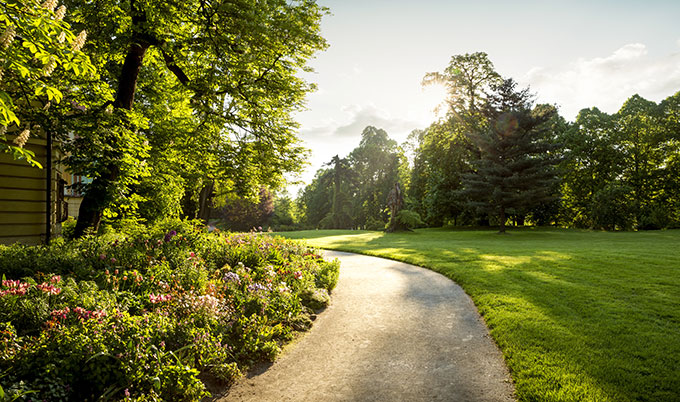green space good
Green space is good for mental health
Published on: 21 August 2019
Living within 300 metres of urban green space such as parks, nature reserves or play areas is associated with greater happiness, sense of worth, and life satisfaction - according to a new study.
Positive mental wellbeing
It has long been understood that individuals feel positive emotions when exposed to natural environments, and successive Governments have enshrined this in planning guidance – but it is not clear how much green space is needed and how close it needs to be to people’s homes to make a difference.
The study, carried out by researchers at Newcastle University, the University of Warwick and the University of Sheffield, is the first to to demonstrate a relationship between green space and mental wellbeing at an individual level.
Dr Victoria Houlden, Professor Joao Porto de Albuquerque, Professor Scott Weich and Professor Stephen Jarvis set out to apply new geospatial research techniques to create an accurate measure of the relationship between green space and three different aspects of mental wellbeing.
Most previous studies have only been able to take into account the overall amount of green space within a specific area, rather than the exact amount of green space that surrounds an individual’s home, and have found mixed results.
Dr Houlden said: “We believe this it is the first study to demonstrate how urban greenspaces may improve a broader definition of mental wellbeing.
“A lot of research focuses on poor mental health, or single aspects of wellbeing like life satisfaction. What makes our work different is the way we consider multi-dimensional mental wellbeing, in terms of happiness, life satisfaction and worth.
“While government guidelines recommend minimum amounts of greenspace in residential developments, our study was able to establish more specifically where greenspace may be most valuable.”

Healthier, happier landscapes
By combining survey responses from 25,518 participants in the UK government’s Annual Population Survey (APS) with data on the shape, size and location of London’s 20,000 public green spaces, the team were able to more accurately model greenspace distribution in relation to where each of the survey participants lived, and explore how that influenced their mental wellbeing as revealed in their survey answers.
The study, published in the August issue of Applied Geography, found:
-
Overall there is a very strong relationship between the amount of green space around a person’s home and their feelings of life satisfaction, happiness and self-worth
-
Green space within 300m of home had the greatest influence on mental wellbeing
-
An increase of 1 hectare – about the size of an international Rugby Union pitch – within 300m of residents was associated with an increase of 8 percentage points in a life satisfaction, 7 in worth and 5 in happiness.
- Green space was less important for mental wellbeing in Central London and East London
- Proximity to green space was more important than lifestyle factors such as employment, income, and general health.
It is hoped that planners will use the results to help create a healthier, happier and more productive urban landscape.
Scott Weich, Professor of Mental Health at the University of Sheffield, said:
"Contrary to popular opinion, up until now the evidence for the link between green space and mental wellbeing has been pretty circumstantial. By combining advanced statistical and mapping methods, we've shown that the effect is real and substantial. Basically we've proven what everyone has always assumed was true."
Professor Stephen A. Jarvis, Director of the EPSRC Centre for Doctoral Training in Urban Science at the University of Warwick, said:
“This is the first study to provide concrete evidence of how urban greenspaces may improve mental wellbeing in the broadest sense, and should therefore lead to healthier, happier and more productive urban landscapes in the future."
Professor João Porto de Albuquerque, Director of the University of Warwick’s Institute of Global Sustainable Development, added:
“As part of the Sustainable Development Goals, the United Nation Members States committed to provide every access to green and public spaces for every citizen by 2030, which is usually measured based on the area of cities that is open space for public use.
"However, our study makes clear that it is not only the area of public greenspace in the whole city that matters when it comes to maximising benefits for mental wellbeing. We provide evidence that the proximity of greenspace to an individual’s home is important for detecting significant associations with improved mental wellbeing, and that the strength of this association may vary in different areas of the city.
“This result has important implications for urban planning and decision making related to how we measure access to urban green spaces and how to design more sustainable and liveable cities.”
Reference: A spatial analysis of proximate greenspace and mental wellbeing in London, by Victoria Houlden, João Porto de Albuquerque, Scott Weich, Stephen Jarvis, is published in Applied Geography, Volume 109, 2019 https://doi.org/10.1016/j.apgeog.2019.102036
Press release adapted with thanks to the University of Warwick



